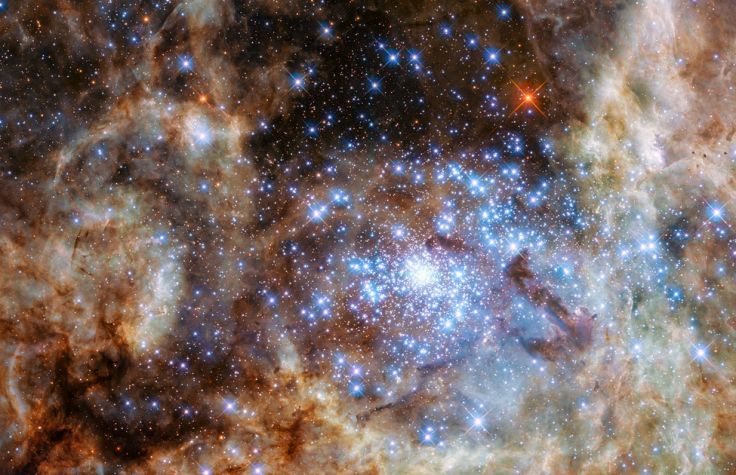Tarantula Nebula: Hubble spots nine 'monster' stars with masses 100 times that of the Sun

The Hubble Space Telescope has identified nine monster stars in outer space, all with a mass of over 100 times that of the Sun. The stars are part of the cluster R136, and have become the largest group of massive stars ever found.
The star cluster is located 170,000 light years from Earth, and the findings will help astronomers learn about the origin of giant stars. The report was published in the Monthly Notices Of The Royal Astronomical Society.
The researchers used the Nasa/ESA Hubble Space Telescope to identify the nine stars. Specifically, they used a wide camera and an imaging device that cut through the ultraviolet light surrounding the massive stars.
The star cluster lies in the Tarantula Nebula, in the Large Magellanic Cloud. In total, they discovered 52 new stars in the cluster.
Dozens of the stars were found to have 50 times the mass of the Sun, whist nine were more than 100 times its mass. These nine massive stars are also very bright – they have a combined brightness of more than 30 million times the Sun.
Paul Crowther, lead author of the study from the University of Sheffield said: "Once again, our work demonstrates that, despite being in orbit for over 25 years, there are some areas of science for which Hubble is still uniquely capable."

The discovery has led the scientists to speculate about the origin of these enormous stars. They believe their results may disprove previous theories about massive star formation.
"There have been suggestions that these monsters result from the merger of less extreme stars in close binary systems," said Saida Caballero-Nieves, co-author of the study. "From what we know about the frequency of massive mergers, this scenario can't account for all the really massive stars that we see in R136, so it would appear that such stars can originate from the star formation process."
Despite their enormous size, none of the recently discovered stars have become the largest-ever identified. That record remains with R136a1, a star that is a staggering 250 times the mass of the Sun.
© Copyright IBTimes 2025. All rights reserved.






















